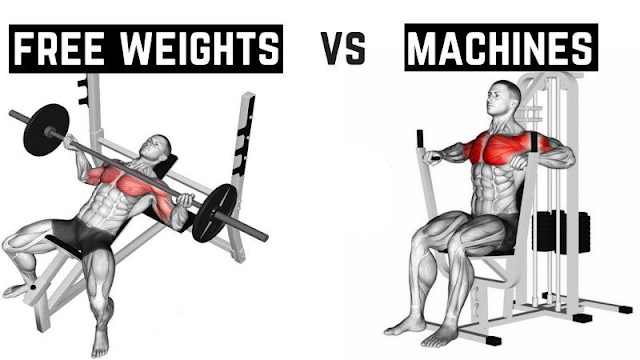When it comes to enhancing sport performance, the choice between using machines or free weights in training is a critical decision. Both methods offer distinct advantages and disadvantages that can significantly impact athletic development and overall performance.
Pros and Cons of Machines for Sport Performance
Pros:
Safety and Stability: Machines often provide a guided range of motion, reducing the risk of injury from improper form or overextension. This stability can be crucial for beginners or athletes recovering from injury.
Isolation of Muscles: Machines are designed to target specific muscle groups effectively, allowing athletes to isolate and strengthen particular areas of weakness.
Ease of Use: Machines typically have adjustable settings and are straightforward to use, making them accessible for athletes of varying skill levels.
Controlled Resistance: Many machines offer adjustable resistance levels, allowing athletes to progress gradually and monitor their strength gains.
Cons:
Limited Range of Motion: Some machines restrict natural movement patterns, which may not translate well to sport-specific movements that require full range of motion and coordination.
Less Core Activation: Machines often stabilize the body, reducing the need for core engagement compared to free weights, which can be a disadvantage in sports requiring core strength for stability and power.
Less Functional Strength: The fixed movement patterns of machines may not mimic the dynamic movements required in sports, potentially limiting transferable strength gains.
Dependency: Relying solely on machines can lead to a dependency on the equipment, which may not always be available or suitable for all training environments.
Pros and Cons of Free Weights for Sport Performance
Pros:
Functional Strength: Free weights promote natural movement patterns, enhancing overall functional strength and coordination that directly translate to sports performance.
Core Stabilization: Using free weights requires greater core activation for stability and balance, which is essential for many athletic movements.
Versatility: Free weights allow for a wide variety of exercises and movement combinations, offering more versatility in training programs.
Sport-Specific Training: Athletes can replicate sport-specific movements and positions more closely with free weights, improving muscle memory and performance.
Cons:
Higher Injury Risk: Without proper technique and supervision, free weights can pose a higher risk of injury due to the need for stabilization and control throughout the entire range of motion.
Learning Curve: Mastering proper form and technique with free weights requires more skill and experience, which can be challenging for beginners.
Equipment Availability: Access to a full range of free weights may not always be feasible in certain training environments, limiting exercise options.
Progression Challenges: Progressing with free weights requires careful planning to ensure continuous overload and adaptation without risking injury.
Conclusion
In conclusion, both machines and free weights offer unique benefits and drawbacks for enhancing sport performance. The choice between the two should consider the specific needs of the athlete, their training goals, and the sport requirements. Machines can provide a safe and controlled environment for targeting specific muscle groups and rehabilitating injuries, but they may lack the functional strength and core activation crucial for many sports. On the other hand, free weights promote functional strength, sport-specific movements, and overall coordination, but they require proper technique and supervision to mitigate injury risks. Ultimately, a balanced approach that integrates both methods based on individual training objectives and developmental stages will likely yield the most comprehensive results in sport performance enhancement.

No comments:
Post a Comment